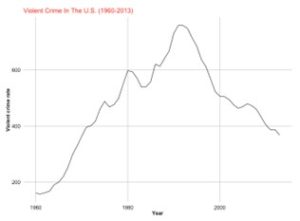
Marty Levine
August 23, 2022
My wife and I raised our three sons decades ago. We thought it important, and safe, for them to learn to be responsible and to care for each other. We saw the world around us as open and safe. It seemed so natural for us to send them off to school on their own, walking several blocks and even crossing a major roadway there and back. We trusted them to come home to an empty house, let themselves in, call their mom to let us know they were home, and get on with their homework or their play. We trusted them to care for each other. We saw neighbors in a diverse community as a joyous gift for them to value.
We did not see our world as so dangerous that we needed to hover over them, make every decision for them and protect them from every bump, scrape, or disappointment. As our children aged, we allowed their worlds to get larger. When our youngest changed schools at age 9 he had a much longer way to go but there was a bus line with a stop just a block from our house and a stop just a block from his new school. I was quite comfortable with him using public transportation; I had been a NY subway rider at that age, to and from my grandparents’ home. We became more comfortable allowing them to care for themselves at night, checking in with them at intermissions from the phone booths behind our seats on nights when we had opera tickets.
Looking back, I smile about those years. Looking at our children today, now that each of them is parenting families of their own, I recognize that they have taken something from our approach to parenting and added something to make it their own.
A story, “A Mom Let Her 7-Year-Old Play in the Park. Arizona Arrested Her and Banned Her From Working With Kids,” that Reason recently published made me wonder if I could parent today like I parented before. It made me wonder if the decisions I made then were wise and appropriate, and if our society has changed so much over those years.
The story was about a single mother in Arizona who finds herself in trouble with her state’s child protection agency because of a parenting decision not unlike those I made years ago.
“Sarra…let her 7-year-old son and his 5-year-old friend play at the park while she ran the errand. She instructed the kids to wait for her by the jungle gym; taking note of an adult acquaintance teaching a tai chi class in the park, Sarra told her kids to consult the friend in the event of an emergency. She then left to buy her turkey. ‘It seemed like a nice, calm day,’ says Sarra. Leaving the kids behind was an easy decision, one any parent might have made. The park was safe and the errand was quick.”
According to Reason’s overview, in 2022 my wife and I could be standing next to Sarra facing accusations of child neglect.
“Though there’s not an explicit law against letting kids play by themselves in a public park, Arizona’s minor delinquency laws are especially vague. And even in states where the laws are clearer, parents are customarily prosecuted for leaving kids at home, letting them walk to school by themselves, or dropping them off at the playground for a few minutes of unmonitored play. Thus Sarra joined the ranks of the Meitiv parents, Melissa Henderson, Megan McMurry, and so many others across the country who were wrongly punished by law enforcement for entrusting kids with reasonable levels of autonomy.”
I’m left to wonder if the world has become more dangerous and the risks, we face gotten that much greater. Or were we irresponsible parents who endangered our children and were just lucky that no harm was done?

What has changed is our level of fear. It is not that we have become a nation of more crime. Writing for theBrennan Center in 2015, Lauren-Brooke Eisen compared current crime data with public perceptions and found that “…despite dramatic declines in the nation’s violent crime rate, a majority of Americans say ‘there is more crime in the U.S. than there was a year ago,’ which reflects a long-term Gallup trend. Currently, 63 percent of Americans believe crime is up over last year. The reality, again, is different. Crime statistics released by the FBI also in November 2014 revealed that the estimated number of violent crimes in 2013 decreased by 4.4 percent when compared with 2012 figures, and the estimated number of property crimes decreased by 4.1 percent…” By 2021 almost ¾ of people believed that there was more crime than in the past.
So why is it that we see the world as more dangerous than it actually might be?
“If it bleeds it leads” is an old maxim from the days when newspapers were our source of information. In our current world of 24/7 news coming at us from every direction and through multiple media, it remains true; it still dictates what gives us chyrons (the text adding information on the bottom of your video screen that often provokes our ire), what makes flash twitter announcements, what becomes news flash texts.
The media sells its wares to an audience that is pulled to the horrific crime rates although they may actually be lower, but it becomes harder to know that when we continue to be bombarded by scary stories of murders, abductions, shootings, and carjackings.
But it is more than this diet of crime news that has made many of us more frightened of our world.
Over decades we have witnessed a society that seems unable to get it right. The World Trade Center and the Pentagon are blown up in front of our eyes. We have an economy that seems unable to keep more and more of us economically safe and secure. We have an environment that is out of control, literally bringing increasingly destructive weather down on us. We have a health care system that can no longer protect us from disease. All around us the social structures we counted on to keep us safe seem to be failing.
The progress we have made in addressing the racism, sexism, and all the other “isms” that harmed so many of us, also required many of us to make room and give way. It demanded a loss of privilege, and it made many of us uncomfortable and fearful of a new social contract that we did not feel we benefitted from.
This mixture of societal forces may not be new. Crime goes up and goes down. Our social constructs have changed over the decades. We have, as a nation, been always confronted with forces we cannot control, individually or collectively. What has made this a particularly volatile moment is the ability to use the communication tools we now have available to spark fear. Those seeking power have always recognized that fear is a strong motivator and they have not been shy in wielding it.
The use of fear has become the go-to card in every movement. From the right and from the left we are bombarded with messages of doom, with messages that are less about how we will make our future better and more about how we must be fearful. And from that fear comes nothing good. We accuse parents of being irresponsible for trusting their kids. We build gated communities. We fear government. We arm ourselves. We give up on our commitment to build a nation for all of us and seek to protect what is “mine”
I wish I had a sense of how to change course. But I have no easy answer. I’d like to start by just asking you to consider how this sounds as a diagnosis of a national challenge. Let’s not fear it. Let’s recognize it and begin to figure out how we break away from manufactured fear and begin to build a sense of trust and move toward the life we all want.
